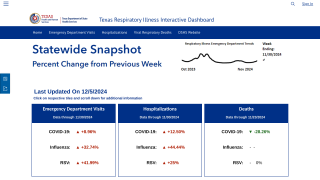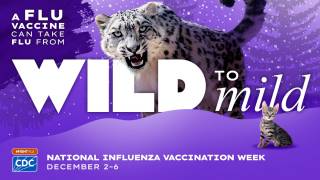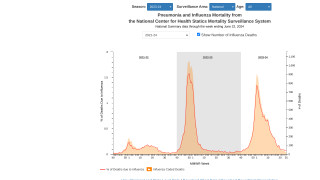CDC Flu News: Week #52

Influenza activity in the United States is increasing for the week ending December 29, 2018, reports the Centers for Disease Control and Prevention (CDC).
Influenza A(H1N1)pdm09, influenza A(H3N2), and influenza B viruses continue to co-circulate.
And, unfortunately, 2 additional influenza-associated pediatric deaths were reported during Week #52.
These new fatalities increase the 2018-2019 flu season total to 13. The previous flu season recorded 185 pediatric fatalities related to influenza.
One reason for these flu-related fatalities is that influenza viruses often mutate, so the strains contained in vaccines may not precisely match circulating viruses, which reduces the effectiveness of the flu shot.
The influenza vaccines deployed over the past few seasons were approximately 40 percent effective, reports the CDC.
An annual influenza vaccine is the best way to help protect against flu., which is why the CDC recommends most people over the age of 6 months get an annual flu shot.
Flu vaccines cause antibodies to develop in the body about 2 weeks after vaccination. These antibodies provide protection against infection with the viruses that are in the vaccine.
Additional highlights from this CDC report are as follows:
- Viral Surveillance: The percentage of respiratory specimens testing positive for influenza viruses in clinical laboratories is increasing. Influenza A viruses have predominated in the United States since the beginning of October.
- Influenza A(H1N1)pdm09 viruses have predominated in most areas of the country, however, influenza A(H3) viruses have predominated in the southeastern United States.
- Virus Characterization: The majority of influenza viruses characterized antigenically and genetically are similar to the cell-grown reference viruses representing the 2018–2019 Northern Hemisphere influenza vaccine viruses.
- Antiviral Resistance: All viruses tested show susceptibility to the neuraminidase inhibitors (oseltamivir, zanamivir, and peramivir).
- Influenza-like Illness Surveillance: The proportion of outpatient visits for influenza-like illness (ILI) increased to 4.1%, which is above the national baseline of 2.2%.
- All 10 regions reported ILI at or above their region-specific baseline level.
- The increase in the percentage of patient visits for ILI may be influenced in part by a reduction in routine healthcare visits during the winter holidays, as has occurred during previous seasons.
- ILI State Activity Indicator Map: New York City and 19 states experienced high ILI activity; nine states experienced moderate ILI activity; the District of Columbia and 10 states experienced low ILI activity, and Puerto Rico and 12 states experienced minimal ILI activity.
- Geographic Spread of Influenza: The geographic spread of influenza in 24 states was reported as widespread; Puerto Rico and 18 states reported regional activity; six states reported local activity; the District of Columbia, the U.S. Virgin Islands, and two states reported sporadic activity; and Guam did not report.
- Influenza-associated Hospitalizations A cumulative rate of 5.4 laboratory-confirmed influenza-associated hospitalizations per 100,000 population was reported. The highest hospitalization rate is among children younger than 5 years (14.5 hospitalizations per 100,000 population).
- Pneumonia and Influenza Mortality: The proportion of deaths attributed to pneumonia and influenza (P&I) was below the system-specific epidemic threshold in the National Center for Health Statistics (NCHS) Mortality Surveillance System.
In the USA, antiviral medications and various flu vaccines are available in most pharmacies.
The CDC Vaccine Price List provides the private sector vaccine prices for general information.
And, flu vaccine discounts can be found here.
Vaccines, like any medicine, can have side effects. You are encouraged to report negative side effects of vaccines to the CDC.
Our Trust Standards: Medical Advisory Committee

























